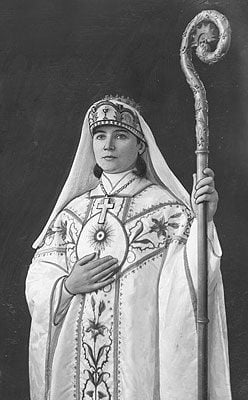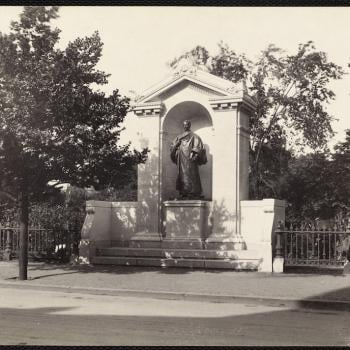Within the confusing mists of that earliest period of church formation, where the bulk of surviving documents are associated with the faction supporting Paul’s claims to leadership, trying to figure out what was “historical” is extremely difficult. Probably discerning exactly how the community that followed Jesus became the Church is past possible.
Still, there are tantalizing hints on this and that question. Among these questions where we can find hints are whether there were women in leadership at that time. From what we can discern from the slight sources available, the answer certainly appars to be yes. Beyond that bare assertion, well, it is hard. Some see the possibility of several women who today would be considered bishops. Priscilla is the leading example. Some argue for Phoebe, as well. The scriptural reference for her is as a deacon, but the argument goes the terminology wasn’t yet settled, and the context suggests a bishop.
Of course we can push even farther back and suggest Mary Magdalene was an apostle, a predecessor to any bishop. I personally am convinced this is true.
But after the beginning as confused and uncertain as it is, women were quickly relegated to the background and denied even the most junior of the clerical roles.
In the nineteenth century churches that do not claim apostolic succession began ordaining women. The Congregationalist, later Unitarian Antoinette Brown Blackwell was ordained in 1852 by her local congregation but not accepted by the denomination. The first woman recorded as being regularly ordained in a Christian church was Olympia Brown, ordained a Universalist minister on the 25th of June, 1863.
Until the twentieth century among churches claiming an apostolic succession, the largely mythical belief church leaders have been commissioned in a historic line from today back to the apostles and through them to Jesus, women have been vigorously excluded.
Most, I hope, are familiar with the consecration of Barbara Clementine Harris as suffragan bishop of the Episcopal diocese of Boston in 1989.
But, other than among the tiniest of independent sacramental churches, the first woman who can claim to be consecrated a bishop within the aposotlic succession was Antonina Wilcka of the Polish Old Catholic Mariavite Church.
Antonina Wilcka was born in October, 1890 in Warsaw. In 1929 together with eleven other nuns, she was ordained a priest. And on the 28th of March, 1929, she was consecrated a bishop. Bishop Wilcka died on this day in 1946, marked by many as a feast day.
A worthy figure. Sadly, there’s little on her in print. There’s a Polish language page on Wikipedia, but almost nothing in English.
As women advance into leadership roles in, at least, the Episcopal Church, and are increasingly demanding their place among other sacramental churches, hopefully we’ll remember Antonina as one among blessed memory…













